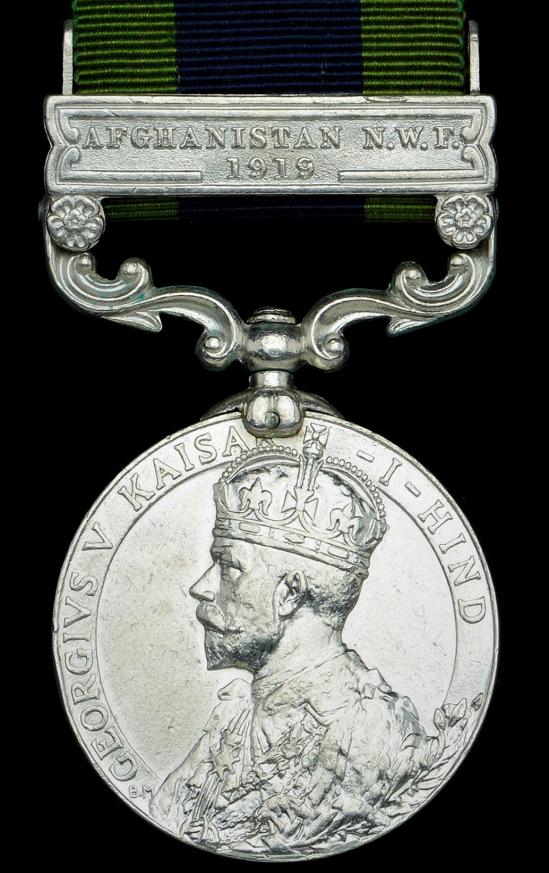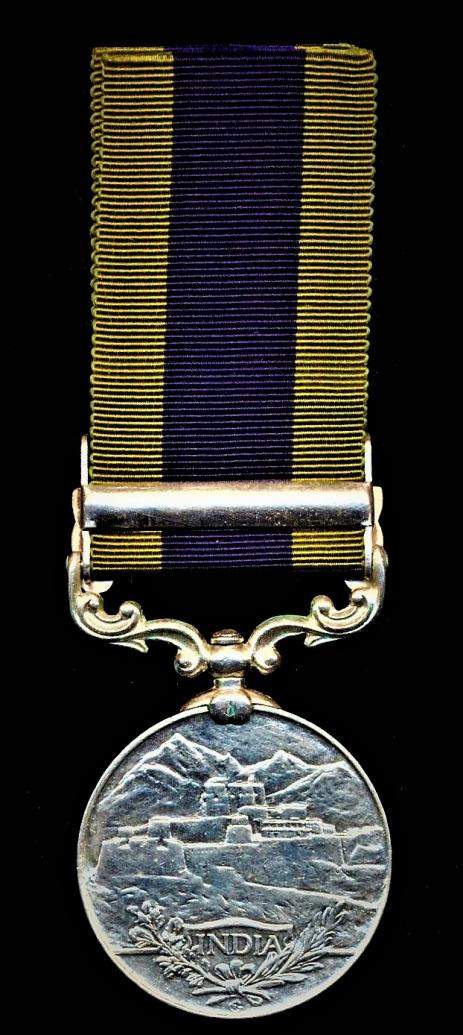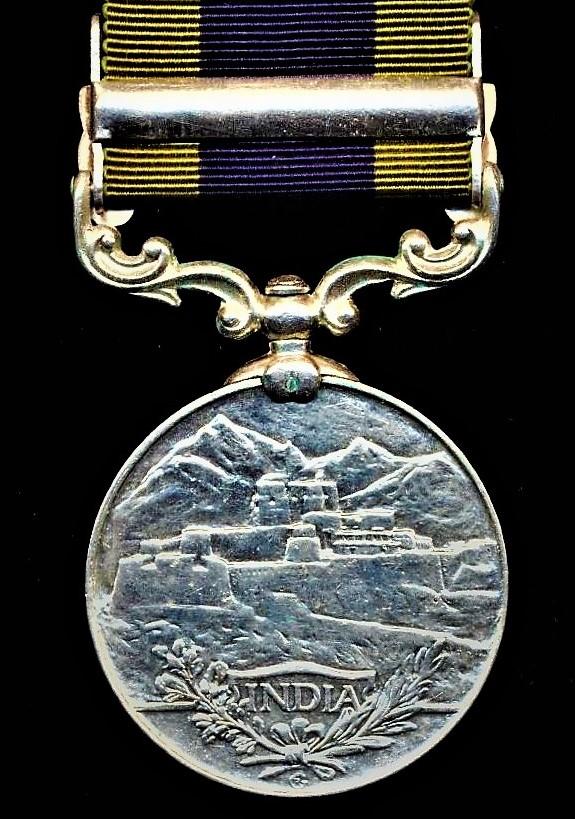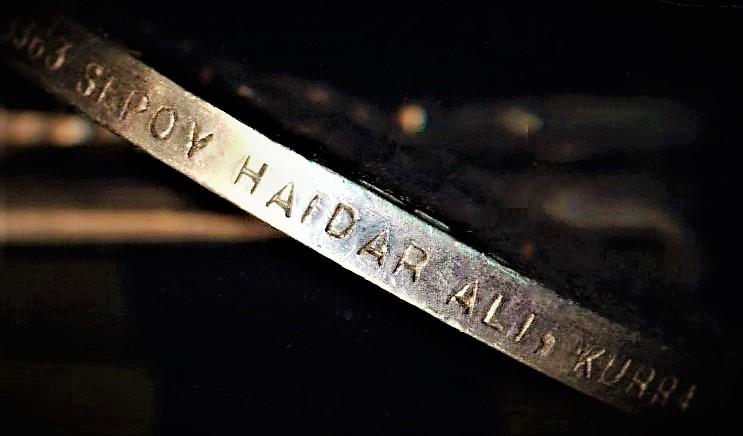India General Service 1908-35. GV first type silver issue with clasp 'Afghanistan N.W.F. 1919' (3363 Sepoy Haidar Ali, Kurram Militia.)
The recipient Haidar Ali, held the rank of 'Sepoy' (Private) while serving with the Kurram Militia, a 'Frontier Corps' that was based and deployed in the Kurram Valley 'Tribal Territory' region of the North West Frontier of British India
The Kurram Militia (established in 1892), was headquartered at 'Parachinar', and was organized in two wings that each comprised of 3 x companies. By 1905, the total number of all-ranks serving in the Kurram Militia was reported to be 1475
The native ranks of the Kurram Militia were recruited exclusively from the local 'Turi' tribesmen. Amongst the Pathan tribes of the North West Frontier, the 'Turi' were distinct as being adherents of the Muslim 'Shiah' sect, whereas the clans in the surrounding tribal areas bordering the Kurram Valley were adherents of the 'Sunni' sect
During the Third Anglo-Afghan War of 1919 the Afghan General Nadir Khan moved into the Kurram Valley, cutting the Thall to Parachinar road, and induced numbers of Zaimukht and Orakzai to join him. To relieve Thall, a British force advanced from Jalalabad, and Nadir Khan was obliged to withdraw after four days. During the time that the Kurram Militia were cut off, they gave an excellent account of themselves, not only defending the valley, but also occupying vantage points, which later acted as stepping stones for further operations against the Afghans. After their relief, they captured the Afghan post at Amir Thana. The Commander-in-Chief, India, in his dispatches described the conduct of the Kurram Militia as "deserving of highest praise"
In addition to the collective approbation (above), several members of the Kurram Militia were individually decorated for their services during the Third Afghan War, including 4 x native ranks who between them received received; three awards of the Indian Order of Merit, and one Indian Distinguished Service Medal
Condition: VF
Code: 19665







